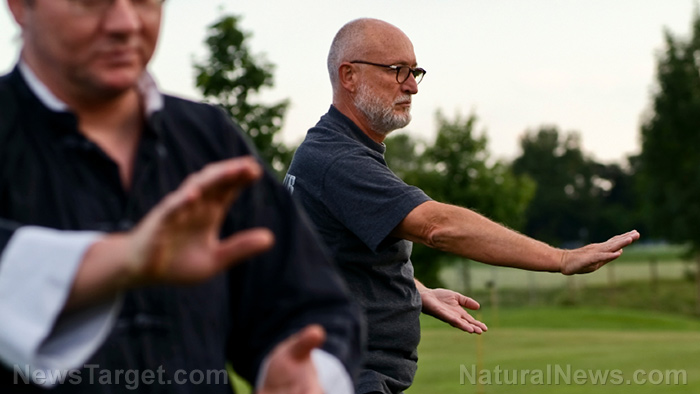Tai Chi found to significantly improve knee movement and flexibility in osteoarthritis patients
09/01/2018 / By Edsel Cook

For older adults seeking a drug-free approach to managing knee osteoarthritis (OA), practicing tai chi could be the key to improving their knee movement and flexibility.
Knee OA is one of the most common joint problems that people run into as they get older. However, it’s considered to be a major cause of disability for both young and old people alike.
One common way to manage knee OA without resorting to medication is exercise. The trick is finding a form of physical activity that isn’t too intense or boring for older adults so that they can sustain it over long periods of time.
The Chinese martial arts Taijiquan (commonly referred to as Tai Chi) is a likely therapeutic modality. Studies suggest that practicing tai chi could alleviate OA symptoms like pain, stiff joints, and hobbled physical capabilities.
However, the effects of tai chi on knee proprioception have never been documented.
Proprioception is the body’s ability to sense the position of a joint and detect motion. It helps develop motor control and is important in the reflex protection of joints against injurious forces.
Earlier studies suggested that defective proprioception could increase the risk of knee osteoarthritis.
Therefore, a Chinese study investigated the effects of tai chi practice on knee proprioception in patients with knee OA. It also evaluated the changes in knee OA symptoms. (Related: Acupuncture found to calm heart rate, increase stamina in athletes engaging in high-intensity training.)
Comparison of Taijiquan group and control group
Researchers held a randomized, controlled trial at the Shanghai University of Sport. The trial period lasted for 24 weeks and compared a Taijiquan program with health education in patients with knee OA.
Participants were selected based on the criteria for knee osteoarthritis set by the American College of Rheumatology. The study excluded anyone who practiced other forms of exercise, was bedridden, had recently received other forms of therapy, or requested medication or other types of rehab programs.
Randomly selected participants followed a Taijiquan training protocol. The tai chi forms were chosen and adjusted for the gait characteristics of patients with knee OA.
Other participants joined a control group that attended a weekly wellness education session. The lectures covered topics related to knee OA, but control group members maintained normal lifestyles and avoided exercise/rehabilitation programs.
The researchers assessed the participants’ knee joint kinesthesis, the range in which a person could detect motion and recognize the direction of the knee movement.
They also measured a participant’s level of disability using the Western Ontario McMaster Universities Osteoarthritis Index (WOMAC). Higher scores indicated greater levels of disability.
Results suggest tai chi is effective and safe for knee EO patients
At the start of the trial, there were no major baseline differences between the Taijiquan group and the control group in both knee joint kinesthesis and WOMAC scores.
After 24 weeks, the Taijiquan group reported a greater mean improvement in knee joint kinesthesis than the control group. Tai chi practitioners reported higher flexion and extension in both knees.
Furthermore, the total WOMAC score of the Taijiquan group showed a significant decrease as participants reported fewer incidents of knee pain, stiffness, and disability.
The researchers reported that no adverse incidents took place during their study, which suggested Taijiquan is a safe therapeutic modality for older adults.
The study showed that Taijiquan practice improved knee proprioception of patients with knee OA and that it could also improve joint stiffness.
Recommendations for further research include the addition of male participants and obese female patients, increasing the understanding of biomechanical characteristics of tailored tai chi stepping movements, and extending the trial period to account for long-term results.
Sources include:
Tagged Under: health science, knee joints, knee osteoarthritis, knee proprioception, martial arts, natural cures, natural healing, Naturopathy, physical therapy, remedies, tai chi, Taijiquan, TCM, traditional Chinese medicine




















